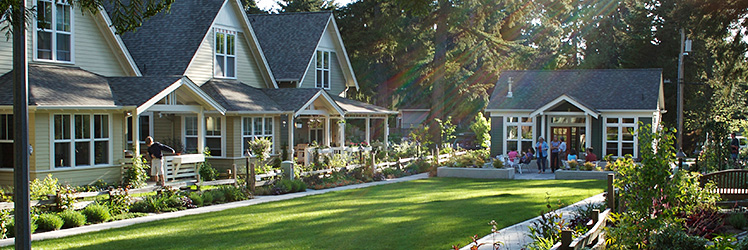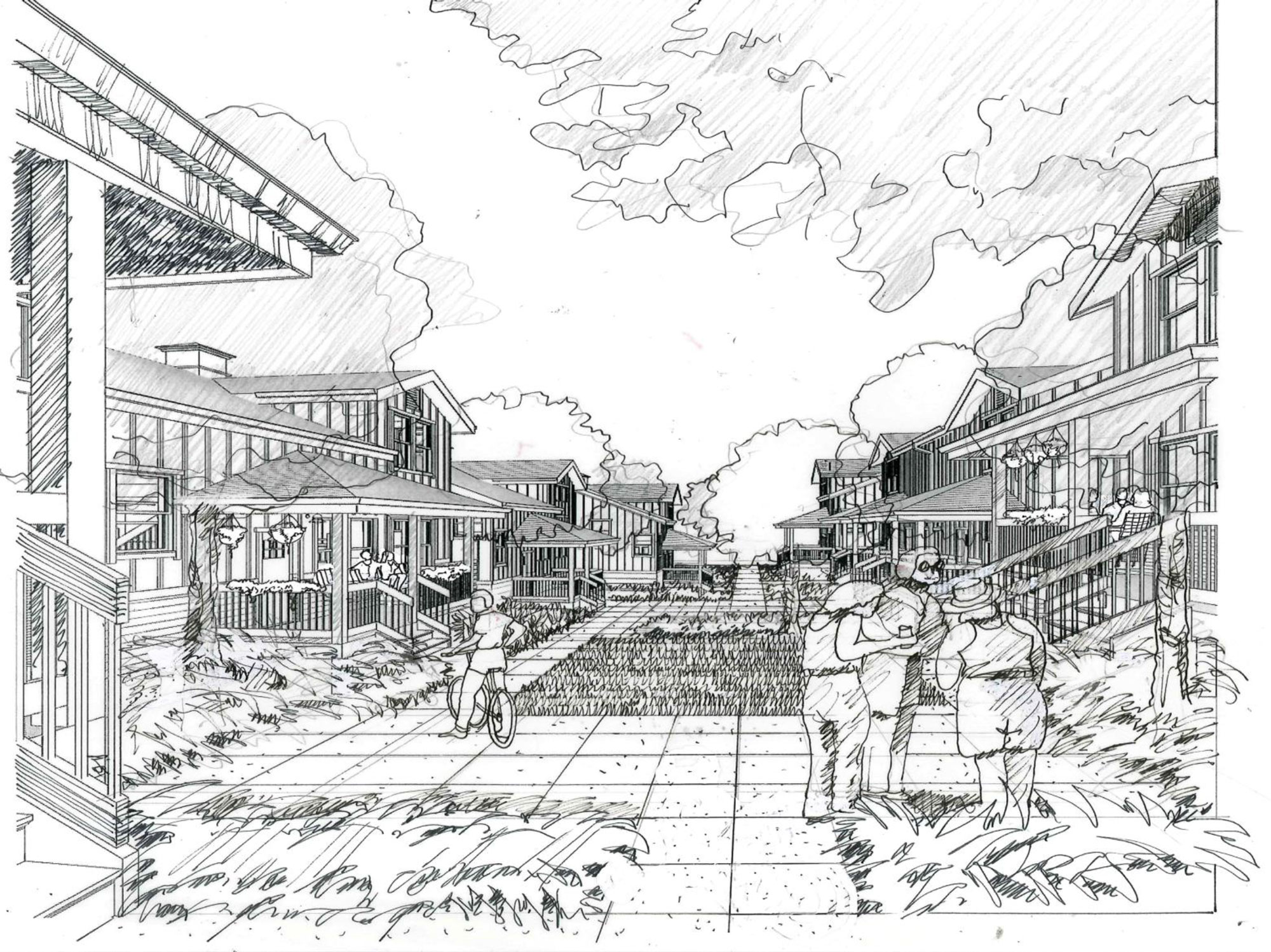
In an era long before the Internet, you could gather neighborhood news at the back fence and send your preteen to the corner store for milk. You might walk to work or take a short bus ride.
Living simpler, more connected lives is a goal of many downsizing Baby Boomers and discerning Millennials, who seek a lifestyle that doesn’t involve a long commute to a giant house in the suburbs.
Small movements are popping up to meet the changing needs of these households. Cohousing, small or micro homes, communal living, and intentional communities are just some of the new approaches to meet the changing needs of these households.
Another alternative is a “pocket neighborhood,” which is a community that is specifically designed to reestablish stronger community connections.
What is a pocket neighborhood?
A pocket neighborhood consists of a group of homes gathered around a common green area within a larger, surrounding neighborhood—a “kind of secluded neighborhood within a neighborhood.” They are patterned after neighborhoods that were prevalent before society became overly dependent on the automobile, and they can exist in urban, suburban, or rural areas. Architect Ross Chapin built the first contemporary pocket neighborhood in the U.S., and has become a champion of the pocket neighborhood movement.
Pocket neighborhood designs include multiple places for people to meet and interact on a daily basis. These informal interactions create a stronger sense of community. Front doors and porches face the common area. Multiple pedestrian pathways encourage walking, and connect residents to surrounding neighborhoods. Multipurpose community rooms serve as important gathering places. The homes in pocket neighborhoods are generally smaller and more adaptable and resilient to meet the needs of a variety of households while allowing the members of the households to age in place as households change overtime.
Pocket neighborhoods are an antidote to today’s unconnected world. They strengthen the web of support and friendship among neighbors. The common areas and the design of the spaces between the buildings are instrumental to making a pocket neighborhood work. Neighbors are on a first-name basis, children are free to play, and residents take part in caring for the common areas.
Pocket Neighborhoods fulfill a need
Pocket neighborhoods have come along to adapt to changing lifestyles:
- Families are changing as Baby Boomers experiment with the “luxury of less,” and contemplate ways to “age in place.”
- Millennials are reducing their environmental footprint and rejecting old ways of doing things.
- Solo households are growing, with roughly one in seven American adults now living alone.
- LGBT families are leaving the cities and exploring new possibilities.
The American Dream is changing, and the home of the American dream is ailing. Today’s changing households are faced with a limited number of housing options that meet their needs. Decades of planners blew up the suburban model with inner and outer ring suburbs that spread people farther and farther apart. Developers have created an “oversupply of large, single-family houses in conventional suburbs and an undersupply of what people want, which is more walkable communities.”
For a growing segment of people who want a stronger sense of community, pocket neighborhoods offer a welcome option.
Introducing the Hill Avenue Pocket Neighborhood
At Westlake Urban, we are in the process of designing our first pocket neighborhood to be located in Hayward, California at 1818 Hill Avenue, and the City of Hayward Planning Commission and City Council unanimously approved the project late last year.

The property is typical of many of the properties in our portfolio in that it has been in the Westlake portfolio for decades. The property is currently vacant, but is centrally located – just a 10-minute bus ride to Downtown Hayward and the Hayward BART Station – and surrounded by parks and recreational areas. A small grocery-anchored shopping center is located less than a block away within easy walking access.
Our goal is to build a pocket neighborhood that will add value, vibrancy, and a sense of belonging to ensure that the community flourishes for many years to come.
Timing
We are anticipating construction to begin in Fall 2015 with the first homes available for occupancy in Spring 2016.
If you or someone you know is looking for a unique community like this, we would love to speak with you. Please give us a call to learn more. And better yet, follow us on Twitter, like us on Facebook, and subscribe to our newsletter. You’ll receive regular updates about the Hill Avenue Pocket Neighborhood. We would love to have you join the conversation.
